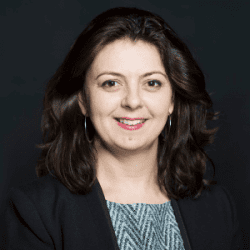This blog is provided by the IPR Organizational Communication Research Center.
Put “How COVID changed public relations” into Google, and there will be no end of links and references to industry perspectives and well-meant advice, from Marketing Society to PRCA, from PR Moment to Provoke Media. In July 2020, when Ana Adi and I were offered the opportunity to edit a special edition of ESSACHESS – Journal for Communication Studies on the future of PR[i], naturally we looked at this through a COVID-tinted lens. Talking with potential contributors, however, it quickly became clear that while the COVID-19 with its work/life-disrupting lockdowns and other turbulent impacts was a major factor, all our potential authors had been pondering questions around the future of PR and comms long before the pandemic hit.
We were lucky to assemble a global set of contributors from Australia, South Africa, Belgium, Brazil, Germany, the UK, and the US to share their latest research addressing the future of public relations and communication from multiple perspectives. This issue covered topics including metamodernism, defining “astroturfing”, public relations in the “comms mix”, the PR newsroom, competences vs. capabilities, the heritage and challenges of neoliberalism, and PR’s role in deliberative democracies.
A group of our contributing scholars – Rene Dalien Benecke, Irma Meyer, Marina Vujnovic, and Jim Macnamara – also joined Ana Adi on a panel at this year’s virtual BledCom conference (see my PR Place writeup), and judging from the questions and responses in the chat, the shared ideas hit a nerve with practitioners and scholars grappling with the same questions:
— How are we educating PR students for a socially responsible role, beyond tech skills and business acumen (Marina Vujnovic)?
— How do we get PR to embrace innovation more confidently and proactively (Jim Macnamara)?
— How do we instill more contextual intelligence into PR education and practice (Dalien Benecke)?
— How do we turn strategy into daily practice, and embrace PR as SRM, or stakeholder relationship management (Irma Meyer)?
The panel, and indeed the entire special edition, made clear that PR’s identity crisis[ii] is far from over. Rather than focusing on publicly desired core capabilities such as social responsibility, empathy, and authenticity in engagement with audiences, PR continues to be “mono-disciplinary” (focused on media, as per Macnamara). It has also been said that PR is “chasing the utopia of what we should be doing” rather than focusing on the good things that are already happening (Dalien Benecke) and serving the “dominant coalition” in Excellence Theory parlance (Meyer). And what seems to be true in practice, can also be traced back to PR education, where there continues to be a lack of “education for competency and active participation in civic life and diverse societies” (Vujnovic/Kruckeberg).
Between ongoing attempts to integrate PR into more holistic marketing efforts (Macnamara), a continued (over)emphasis on technical and business skills (Vujnovic/Kruckeberg), lack of strategic focus (Dalien Benecke), and a reluctance to ask difficult questions (Meyer), the question as to what PR should become post-COVID remains unanswered. In her summary of the BledCom panel, Ana Adi suggested a reconceptualization of PR, aligned in education and practice, as “organized persuasive communication.”
The pandemic undoubtedly represents a global crisis, and following Kuhn[iii], we acknowledge that paradigm shifts are often triggered by crises. At the same time, as Einstein is purported to have said, “we cannot solve our problems with the same thinking we used when we created them.” That makes us question solutions that see a ‘new normal’ as a return to pre-COVID conditions with some learning and higher efficiencies. Rather, we are inclined to entertain solutions based on metamodern ideas as discussed by Irma Meyer, operating between the limitations of modernistic thinking, and the ‘anything goes’ of postmodern riposte – the paradigmatic tussle in our field that has lasted already for 40 years.
Thus, the future of PR and public communication remains full of challenges and opportunities: we hope that our special edition helps identify and understand the former so that we can jointly work on the latter, with a “transformational mindset” (in Dalien Benecke’s words). Ours is a critical-yet-optimistic perspective: in a world that grapples with multi-faceted issues of diversity, global warming, and a pandemic, with oversimplified and oversimplifying populist solutions to wickedly complex global-regional-local problems, constructive and empathetic stakeholder communications can offer solutions, and professional public communicators carry significant responsibility to lead, and not just to be someone else’s voice.
Thus, the special edition and its individual contributions are meant as an invitation to ponder, to discuss, to challenge – a metamodern, critical discourse to contribute to continually improving education and practice. We hope that many will take up that invitation, and we (and all our contributors) are looking forward to hearing from them.
[i] http://essachess.com/index.php/jcs/issue/view/28
[ii] Thurlow, A., 2009. ” I Just Say I’m in Advertising”: A Public Relations Identity Crisis? Canadian Journal of Communication, 34 (2), 245-263.
[iii] Kuhn, T. S., 1996. The Structure of Scientific Revolutions. 3rd edition. Chicago and London: University of Chicago Press. (Originally published in 1962).
Ana Adi
Thomas Stoeckle




